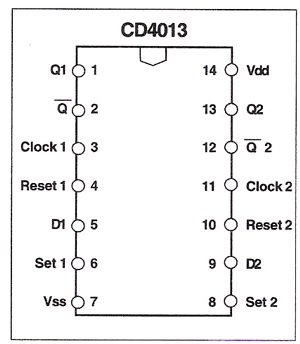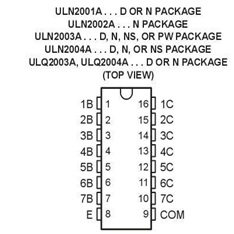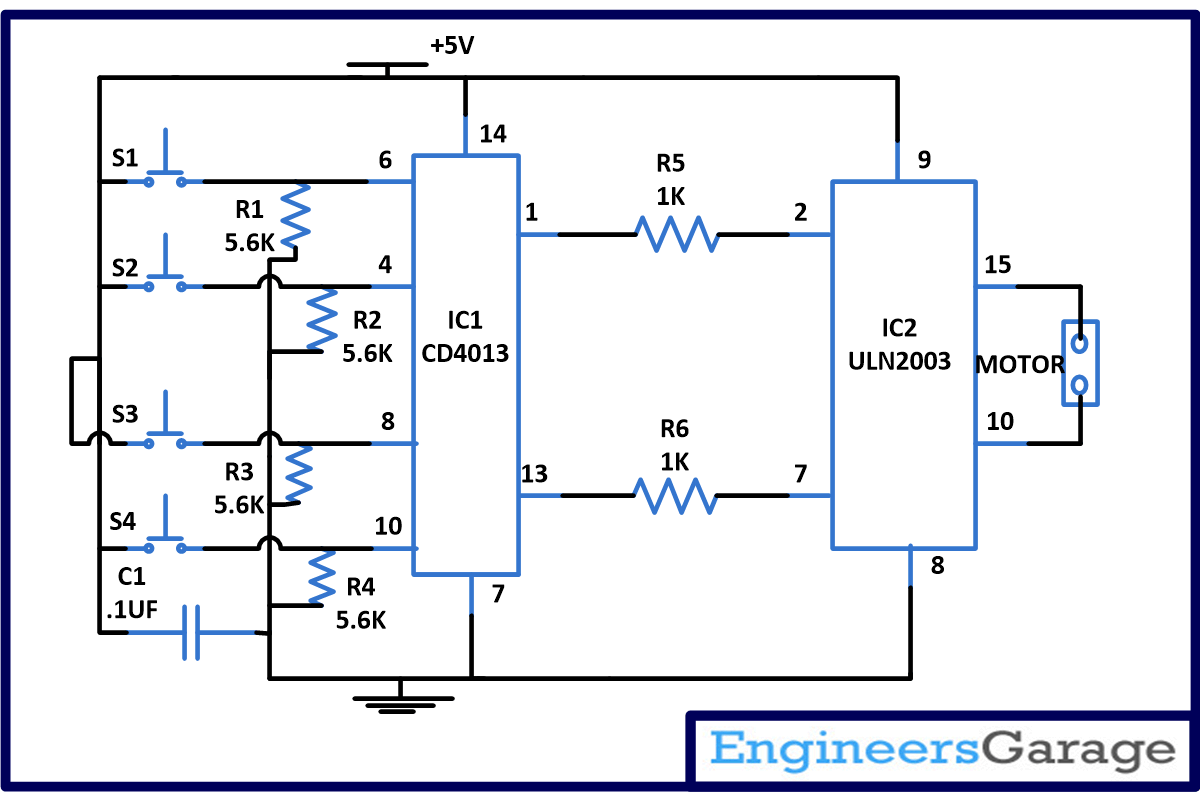This Curtain opener will open and close the curtain of your home just by pressing a switch.
With the help of this circuit you did not need to move from your place to open and close the curtain. This curtain opener circuit is used for domestic purpose especially for small doors and windows.
Same circuit is used for closing and opening of curtain automatically. Due to its small size it can be easily fitted with curtain.You can also power the circuit with the help of adapter readily available in market.
Fig. 1: Prototype Of Curtain Opener Circuit On Bredaboard
Curtain opener circuit comprises of two IC namely CD4013 and ULN2003 with few more components.

Fig. 2: Pin Diagram OF CD4013 IC
1. Pin no1, 2, 13 and 12 are called as complimentary outputs hence both are available as the output means both output stages (high and low) are available. This set of output changes stage while setting and resetting the IC producing opposite logic level at any instant when operated in bistable mode.

Fig. 3: Pin Diagram Of ULN2003 IC
Circuit Diagrams
Project Components
Filed Under: Electronic Projects



Questions related to this article?
👉Ask and discuss on Electro-Tech-Online.com and EDAboard.com forums.
Tell Us What You Think!!
You must be logged in to post a comment.